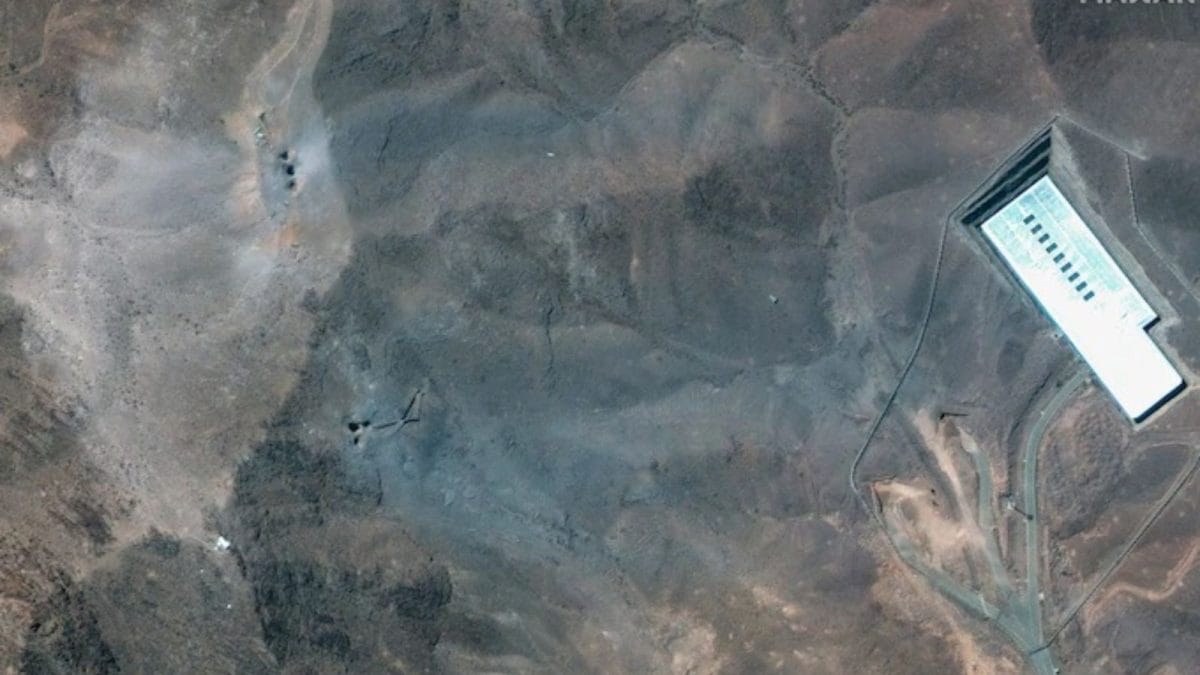ARTICLE AD BOX
Last Updated:July 04, 2025, 14:13 IST
HIP 67522 b, a Jupiter-sized planet, orbits its star in just 7 days. Its closeness disturbs the star’s magnetic field, triggering stellar flares that scorch the planet’s atmosphere

The planet, named HIP 67522 b, orbits so dangerously close to its host star that it is gradually being scorched and torn apart. (News18 Hindi)
A rare and astonishing sight has emerged in the universe, one that has left even scientists baffled. Astronomers have, for the first time, observed an alien planet seemingly inviting its own destruction. The planet, named HIP 67522 b, orbits so dangerously close to its host star that it is gradually being scorched and torn apart.
Roughly the size of Jupiter, HIP 67522 b behaves like a suicidal world. It completes an orbit around its star in just seven days, and its proximity causes it to disturb the star’s magnetic field. This disturbance results in massive stellar flares—explosions that strike the planet’s atmosphere.
A Self-Destructive Cosmic Duo
According to researchers, this is the first time a planet has been seen influencing the activity of its own star. Typically, stars affect the planets orbiting them, but in this case, the planet appears to be fuelling stellar eruptions, creating a destructive loop never witnessed before.
Astrophysicist Ekaterina Ilin from the Netherlands Institute for Radio Astronomy explains, “As it orbits, the planet whips the magnetic field lines of the star like a rope. When the energy reaches the star’s surface, it explodes with far more power than expected."
Stars already possess intense magnetic fields, and when these get tangled, they trigger solar flares and coronal mass ejections. But this is the first instance of a planet being the catalyst.
Unveiled by TESS and Cheops
The discovery was made possible by NASA’s TESS (Transiting Exoplanet Survey Satellite) and the European Space Agency’s Cheops telescope. Initially, TESS detected unusual flare activity in the HIP 67522 system. Later, Cheops confirmed that whenever the planet passed in front of the star, 15 flares erupted—most of them directed towards Earth.
This confirmed that the planet is likely triggering the flares during its orbit, sending bursts of energy towards the star’s surface and sparking massive explosions.
A Planet Burning Itself Away
These continuous blasts are stripping away the planet’s atmosphere, layer by layer. While the planet is currently as large as Jupiter, scientists believe it could shrink to the size of Neptune over the next 100 million years. It’s a cosmic spectacle that feels straight out of a sci-fi film—a giant alien world accelerating its own demise.
Scientists now aim to study this rare system more closely using future telescopes, especially ESA’s PLATO mission, set to launch in 2026. Researchers want to analyse the exact nature of the flares—particularly the UV and X-ray radiation, which can be the most destructive to planetary atmospheres.
Ekaterina Ilin adds, “This is such a new and unique case that I have millions of questions in my mind. We need to find more planetary systems like this to truly understand the pattern."
- Location :
Netherlands
- First Published:
News world Astronomers Discover 'Suicidal' Alien Planet Triggering Explosions In Its Star



.png)
.png)
.png)
















 3 hours ago
5
3 hours ago
5









 English (US) ·
English (US) ·